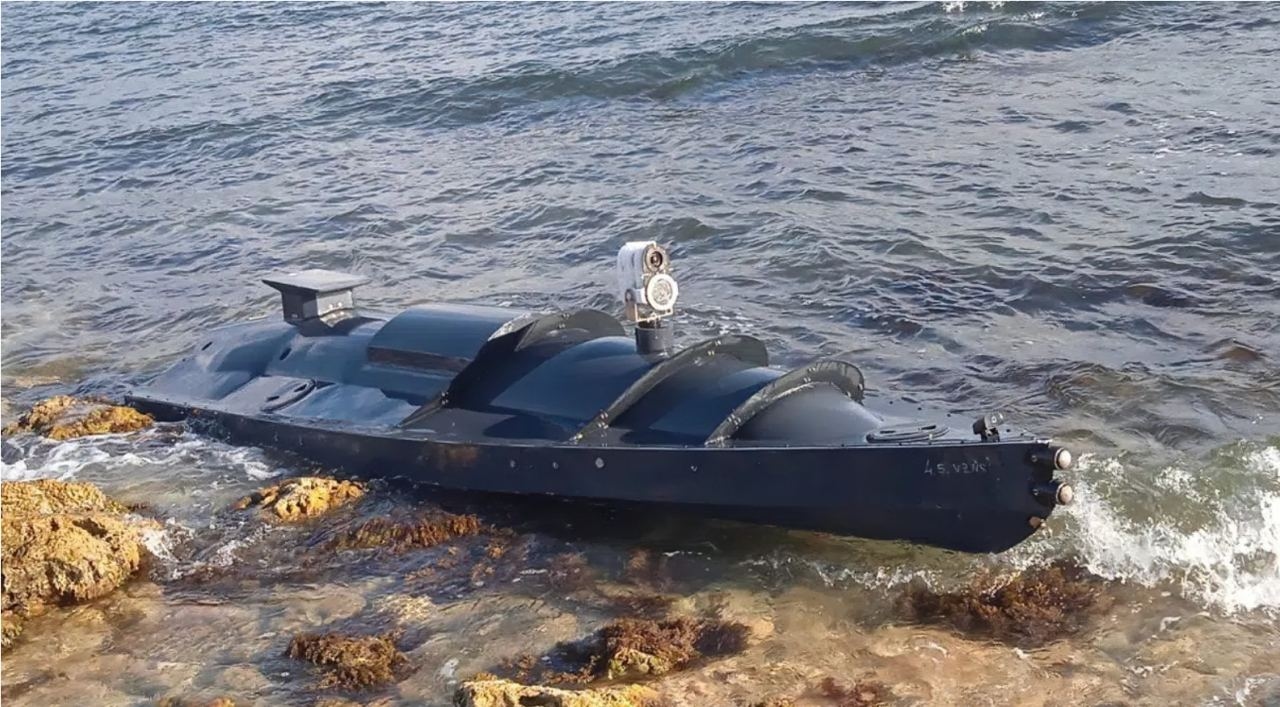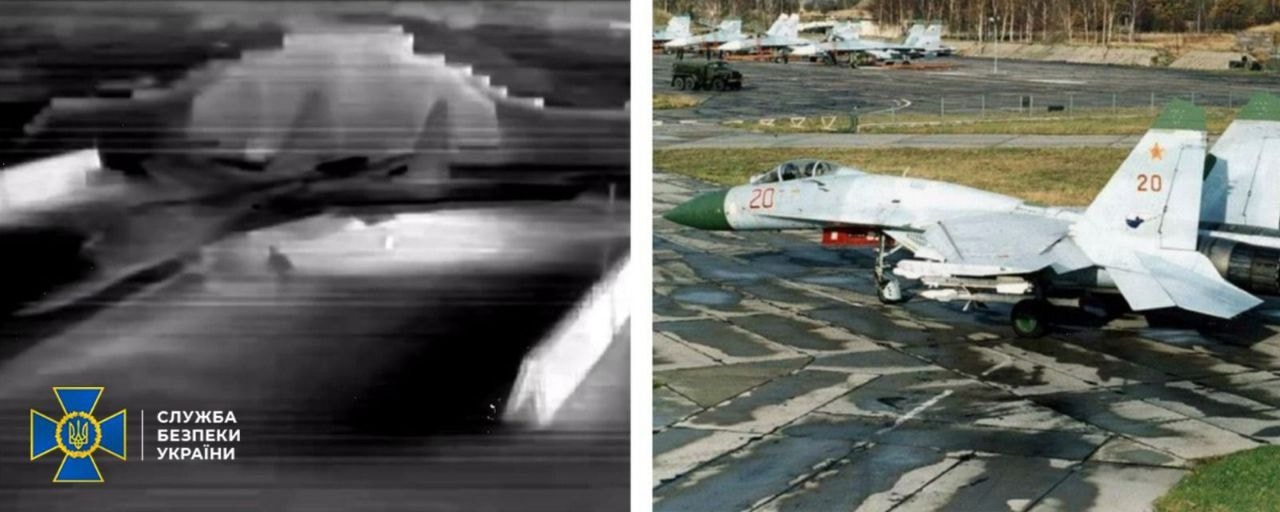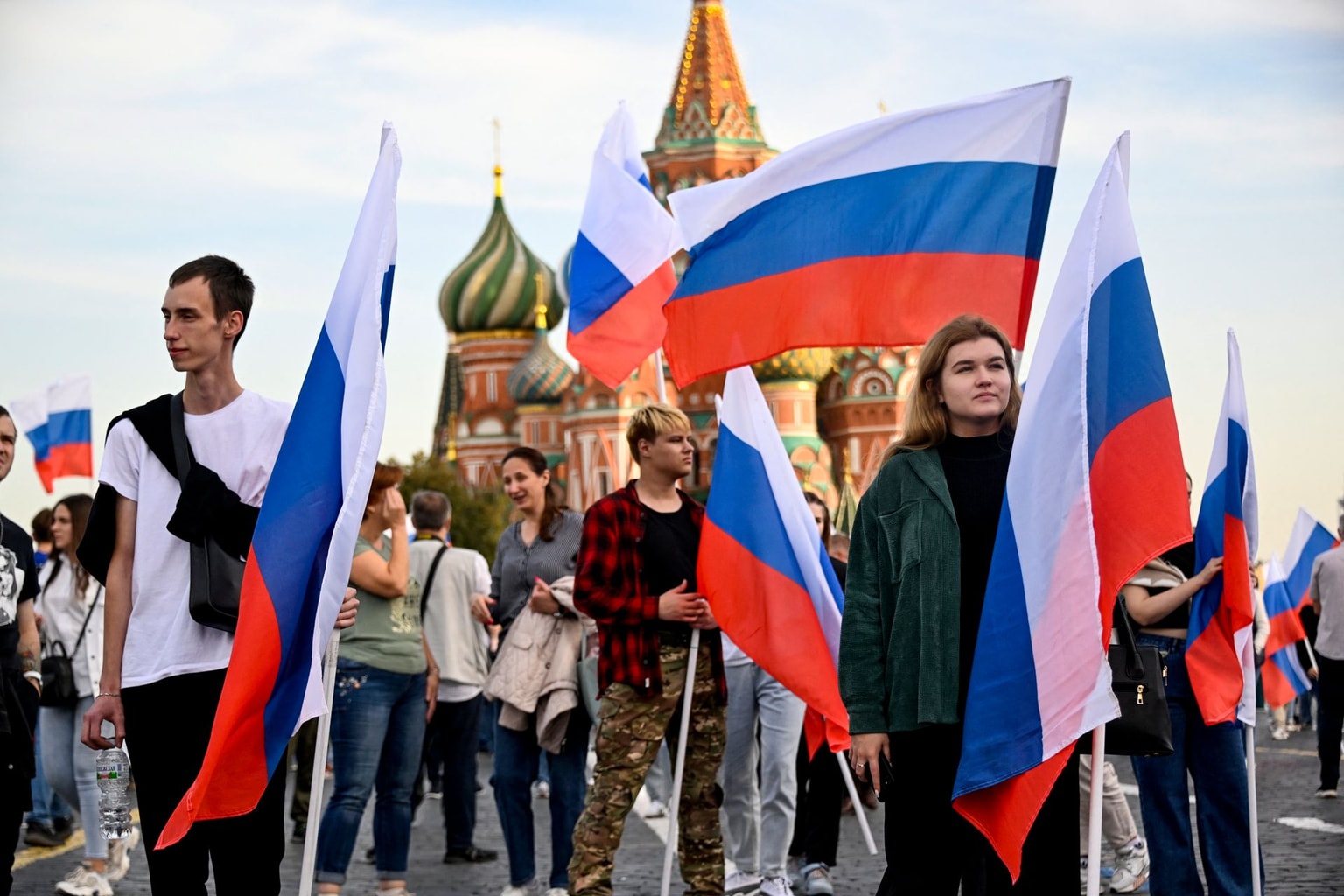Ex-Navy captain: Ukraine’s drone attack in Sevastopol ‘has no equivalent in the history of naval warcraft’

In the early hours of Oct. 29, the famous naval harbor of Sevastopol in occupied Crimea, home to Russia’s Black Sea Fleet, was rocked by a series of mysterious explosions.
Details were scarce at first, but with the coming of dawn, remarkable footage was released of sleek, black maritime drones maneuvering around the bay on the way to their targets: Russian warships. Seven maritime and nine aerial drones were reported to have been used in the coordinated attack, which damaged the flagship of the Russian Black Sea Fleet Admiral Makarov as well as other vessels.
Russia blamed the attack on Ukraine. Ukraine hasn’t recognized that it was behind the attack. Soon after, President Volodymyr Zelensky announced the start of a fundraising campaign to secure “a fleet of marine drones.”
With the nearest Ukrainian-controlled coastline almost 300 kilometers from Sevastopol, the ability of these drone boats to reach their targets in the heart of Russian naval power in the Black Sea shocked observers. Comparisons have been made to Japanese suicide boats used in World War II, or even further back, to unmanned fire ships used in the Age of Sail.
The low cost, maneuverability, and effectiveness of the drones have led to the attack on Sevastopol being described as a revolutionary moment in the development of modern naval warfare.
The Kyiv Independent spoke to military analyst, former Ukrainian Navy captain, and Black Sea security expert Pavlo Lakiychuk about what the attack on Sevastopol means for the Black Sea theater of Russia’s war, and its implications for naval warfare worldwide.
The Kyiv Independent: What have been the main tasks of Russia’s Black Sea Fleet in the full-scale war and how have they changed over time?
Pavlo Lakiychuk: In a conflict between two mainland powers, the fleet almost always plays a support role. The navy will not be taking cities itself, nor will it be dropping off expedition forces like the U.S. Navy did in the Gulf War. Here, the role of the navy is much more limited. The main task of the Russian fleet in Ukraine is the assistance of their ground forces in the southern arena of the war, the carrying out of amphibious operations, carrying out missile strikes on land targets deep behind Ukrainian lines of defense. With the beginning of the full-scale invasion, the Russians deployed their missile ships to strike cities and other targets all over Ukraine, launching a huge number of Kalibr and Onyx cruise missiles. These ships then entered the northwestern sector of the Black Sea, beginning their blockade of Ukrainian coastal areas, sinking several ships, and famously occupying Snake Island, which allowed for the control of all Ukrainian waters.
Their third main task was to carry out amphibious landings behind Ukrainian lines, specifically in Odesa Oblast, but we know that this didn't go very well thanks to Ukrainian preparations – many of the marines simply refused to carry out such landings as they knew they didn't have the necessary support. Despite this, they remained in a state of readiness to carry out such operations, up until Ukraine made its first strikes with Neptune anti-ship missiles. In any case, after taking heavy losses outside Mariupol and Kherson, Russian marine units just don't have the capacity to conduct amphibious landings at all anymore.
The last main function of the fleet is the support of logistics, especially in the Azov Sea area. At this point, it isn't hard to see that the Russian Black Sea Fleet is not currently capable of serving its function in this war, and especially is incapable of supporting Russian ground forces in southern Ukraine.
The Kyiv Independent: What was your immediate reaction to the drone attack on the Black Sea Fleet in Sevastopol? Were you surprised, or did you predict something like what happened?
Pavlo Lakiychuk: I can't say I was surprised, no. In recent months we had seen more and more flying drone attacks against military targets in Crimea, starting from the attacks on airfields in Novofedorivka, Belbek, Dzhankoi and Hvardiiske, to the attacks on the Black Sea Fleet headquarters in Sevastopol. Ukraine has managed to get past the air defense of these bases on a consistent basis now. Just two weeks before this attack, the Russians found one of these drone boats in the area of Kozacha Bukhta. The photos of it match the footage from the attack in Sevastopol. I had no doubts that such an attack could happen, but in what exact fashion it would take place, I could not know; it was a well-kept secret.
The way they... I can't say who exactly... managed to pull it off was really impressive. I can't see any equivalent in the history of naval warcraft to an application of drones, both reconnaissance and attack, maritime and aerial, together like this. It's a new way of waging war on the sea. Nobody has done anything like this before.
The Kyiv Independent: A uniquely Ukrainian innovation?
Pavlo Lakiychuk: Yes – you could compare it in effect with a combined attack by traditional air and sea forces, but the difference here is that it was very difficult to detect. Like a scene from the game “Silent Hunter,” Ukraine directed its weapons to the target at a great distance away from the operation, and no Ukrainian soldier was harmed.

The Kyiv Independent: What can you tell us about these drone boats? What makes them so effective?
Pavlo Lakiychuk: At their size, objects like this are very difficult to detect. In the sea, not only are they very difficult to spot with the naked eye, but more importantly, they do very well to avoid detection by radar systems. They can't be seen by radars designed to detect missiles or torpedoes, and their small size means that their signal is broken up by the waves around them on the surface.
There are other reasons these drone boats were able to travel such great distances undetected; they were only detected when they began their final attack. The systems used to detect an object close to the surface like this are designed to listen for the acoustic signature of a torpedo engine, but these drones used pump jets.
Moreover, very specific tactical choices were made: to distract the enemy from sea targets and cause overall panic, the first strike came from the air. Only then, with the enemy scrambling to respond, came the attack from the sea.
The Kyiv Independent: What are the other advantages of drone boats like this over traditional torpedoes and anti-ship missiles?
Pavlo Lakiychuk: There are advantages and disadvantages to any system, but with torpedoes and missiles, once they are fired they are given a specific trajectory, and cannot make drastic changes to that afterwards. They can't change their mind about which direction to travel in or which target to engage. A missile will lock on to the largest given target and strike in the center, and the officer who launched it no longer has any say in the matter. But these drones are under the direct, precise control of their operator right up until the moment of impact. They are slower of course, but they are more precise and much more maneuverable.
The Kyiv Independent: How do you see the effect of this attack on the Black Sea theater of the war? Can you compare its impact to the sinking of the Moskva with Neptune anti-ship missiles?
Pavlo Lakiychuk: After Ukraine demonstrated the use of its Neptunes, Russia was forced to pull back its navy to the area of Sevastopol, out of the range of our missiles. Even then they were not completely sure that they were safe, so any time they left the harbor, they would only do so in a nervous defensive formation; a ring of sorts.
Now, the Ukrainian drones have managed to damage the Admiral Makarov and other ships just outside the bay of Sevastopol. Now, they know they aren't safe anywhere. I don't know how they will respond, but I would recommend that they withdraw all the way to Novorossiysk, or even better, just to sink all their ships so that we don't do it ourselves. They will certainly be forced to strengthen their defenses in the air, both anti-ship and anti-air. There are a lot of lessons they need to learn quickly: If a maritime drone was able to make it all the way to the Southern Bay in Sevastopol, to be honest, it's a complete mess.
The Kyiv Independent: How do you see Ukraine’s development of these drones, was this invention a quick reaction to the full-scale invasion or could something like this project have been in the works earlier?
Pavlo Lakiychuk: Just looking at the construction of these vessels, I don't think designing and building them quickly was too difficult for us, our manufacturing industry here in Ukraine is easily capable of something like this. I can imagine that work on these drones began around April or May. Of course, we didn't have the time or the opportunity to conduct extensive tests, but I think the best tests are those carried out in battle conditions anyway.
The Kyiv Independent: And how many of these drones do you think Ukraine is capable of producing in a given time?
Pavlo Lakiychuk: The design and technology elements of these vessels are not overly complicated, and the armament can be adapted from existing munitions. How long it takes to produce one depends of course on the resources allocated, and drones like these are built individually, not on an assembly line. Having said all this, it is reasonable to estimate that Ukraine could build a few dozen of these within a month.
The Kyiv Independent: You mentioned how hard these drones are to detect because of their profile in the water, is some kind of new technology needed to address them, or could Russia adapt quickly like Ukraine did with the Iranian Shahed drones?
Pavlo Lakiychuk: They will be more difficult to adapt to than the Iranian drones; it won't require any technological breakthrough but it will take time. Russia will need to reconfigure their radar systems to adjust to the new threat, and learn to recognize the radio profile of these drones. It's important to remember, though, that a small, stealthy target like this will always remain a danger no matter what.
We also don't know whether the drones were equipped themselves with counter-radar equipment. In any case, we can expect an arms race of sorts, just like the race to build more heavily armed and heavily armored battleships in the early 20th century.
The Kyiv Independent: If Russia is indeed forced to evacuate much of its fleet from Sevastopol, will this have an effect on their ability to launch Kalibr cruise missiles at Ukrainian cities?
Pavlo Lakiychuk: Unfortunately not. The operational range of the Kalibr missiles is too great, and can still cover most of Ukraine even from the east of the Black Sea around Novorossiysk. Some of the longer-range versions have even been fired at Ukraine from the Caspian Sea. Of course, we all want to be safe from them, but for now, the main counter against cruise missiles of this type are strong air defense systems. Ideally, we would be able to strike the bases from where they are launched in the first place, but for now we mostly lack that capacity.
The Kyiv Independent: Coming back to the bigger picture, how do you think drones like these used by Ukraine could change naval tactics around the world?
Pavlo Lakiychuk: Even in naval warfare, experts have been saying that drones are the future for years. What they couldn't agree on is where drones would play a greater role – in reconnaissance, minesweeping, patrol, or something else. Ukraine is showing that maritime drones combined with unmanned aerial vehicles can have an incredibly impactful role as an attack weapon.
Turkey is actively developing its own maritime attack drones, but for now, they are seen as part of a ship's armaments. The Ukrainian Navy used a completely different tactic here, that of the maritime drones as an independent weapon system, without being launched from a mother ship.
I remember back in 2016, I was discussing with colleagues the concept of the "mosquito fleet": a large group of smaller boats that can do great damage to larger ships by administering many smaller "bites." The same concept was on display here, and I think it works even better with these drones; a swarm of unmanned mosquitoes of sorts. I am confident this moment could prove to be a breakthrough in naval tactics, and will be analyzed and taught in military academies in countries around the world.
Note from the author:
Hi, I'm Francis Farrell, who wrote this piece from on the ground in some of the areas hardest hit by Russia’s war of aggression against Ukraine. As you read this, Russia is trying to plunge Ukrainian cities into a deep, cold winter, while Ukrainians in Donbas are left in an even more dire position without basic utilities. The Ukrainian army will nonetheless continue working to liberate the occupied territories, but there is still a long way to go before victory. Please consider continuing to support our reporting.










